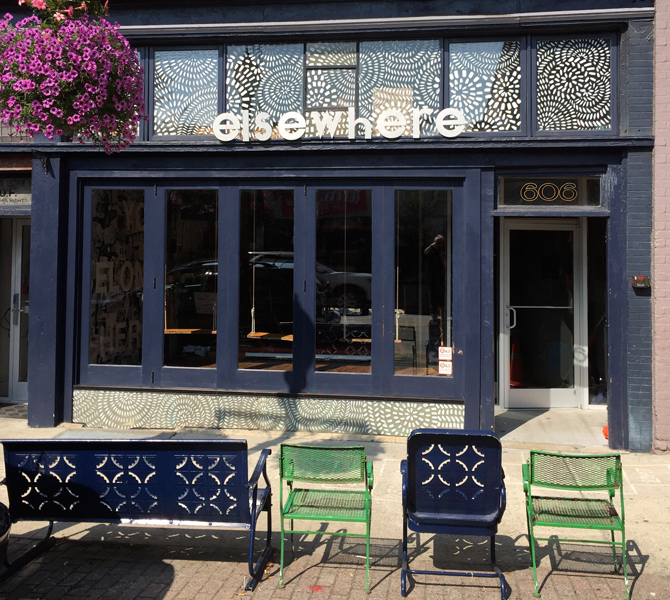 We are back! Hope your summer was good and you didn’t miss us too much.
We are back! Hope your summer was good and you didn’t miss us too much.
For part of our summer break, I ended up in Greensboro, North Carolina, because Middleagedad had an Artist in Residence spot for five weeks at the Elsewhere Living Museum.
The museum is an extraordinary place. Based in a large three story building, it was an old thrift shop, run until 1997 by Sylvia Gray, who had been collecting and selling thrift since 1939. When she died in 2000, the store lay abandoned, still stuffed to the rafters with all of Sylvia’s purchases (we can safely say she was not a minimalist) until her grandson, curator George Scheer, received funding from a number of institutions – including the Andy Warhol Foundation- to open up it as a living museum.
After considerable time spent refurbishing the building and organising the stock, George now brings in around 50 artists a year, from all over the world to work within the space. Art is created from anything found within the walls, using decades worth of thrift -from kids toys to vinyl records (guess what MAD headed for) via rooms full of fabrics, vintage clothes and kitchen paraphanalia, all collected by Sylvia.
Nothing is for sale, so although visitors are more than welcome to come and interact with the artists and browse the weird and wonderful stuff piled up everywhere, they can’t buy anything.
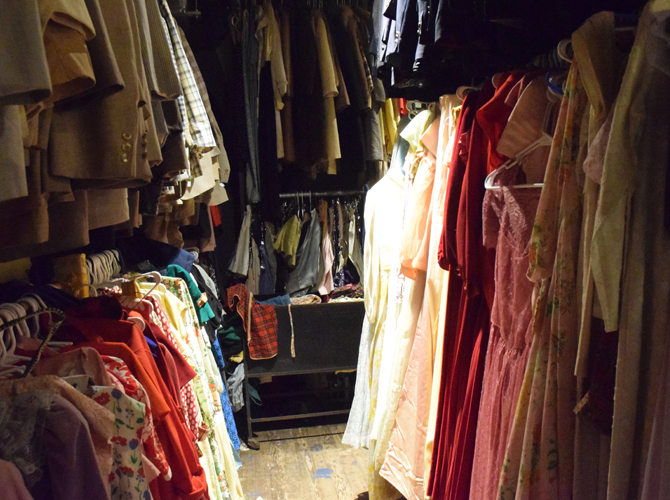
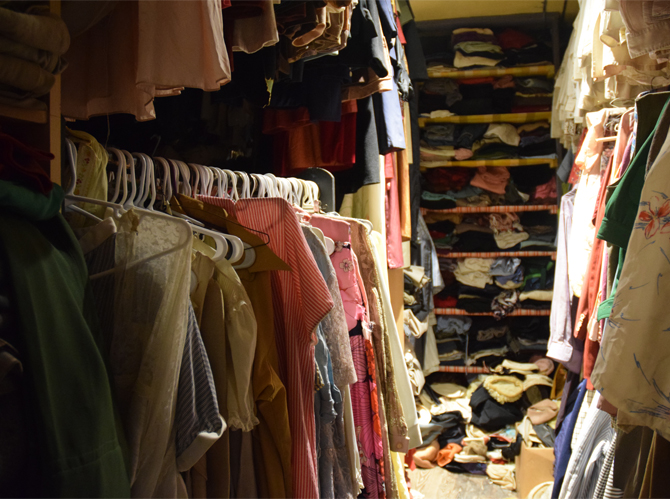
There were four other artists working alongside MAD, Alex Meiser, Janelle Beasley, Alix Pentecost-Farren and Megan Stewart, all living and working within the store environment. Visitors are positively encouraged to hang out and observe the artists at their practice. It’s overwhelming when you first visit, there is SO MUCH stuff, all organised by category.
I naturally wandered towards the floor-to ceiling rails of vintage clothes, crammed into two rooms and while MAD got on with his thing, I befriended Canadian theatre artist Megan. She planned to wear an outfit a day from the collection for the duration of her stay, documenting and displaying her selection within the museum, as well as capturing stories from local visitors who remember the clothes and might even have worn something similar.
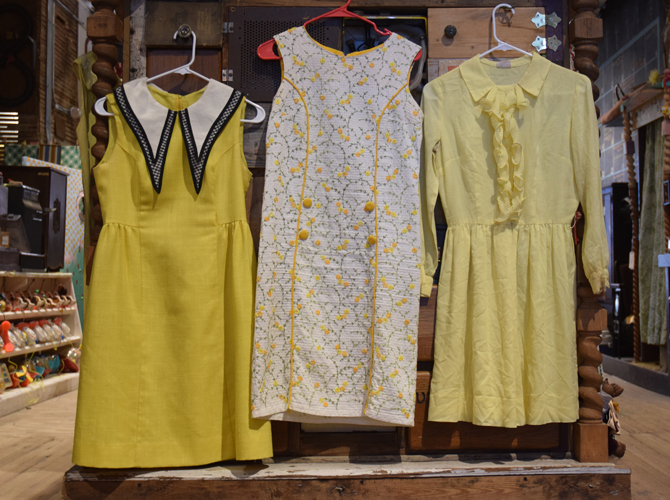
The clothes at the store are a snapshot of Southern Style, from well before 1939, when Sylvia first started to collect, to 1997. I was really interested in the pre-80s stuff made locally or within the USA. There’s an abundance of simple shift dresses, reflecting the long summers of warm weather presumably, often piped and trimmed, occasionally featuring dramatically large prints.
There’s a lot of flounces and frills too, with bows and cute decorative details, hinting at what ‘feminine’ might have been meant back in Sylvia’s day. Long dresses made from polyester chiffon, with high ruffled necklines and swirling skirts and yet more bows indicated a big social scene, or perhaps a more formal expectation of what to wear when ‘going out’. I felt like I was on a film set where someone had decided to remake Dallas with a Mad Men theme, with music by Dolly Parton.
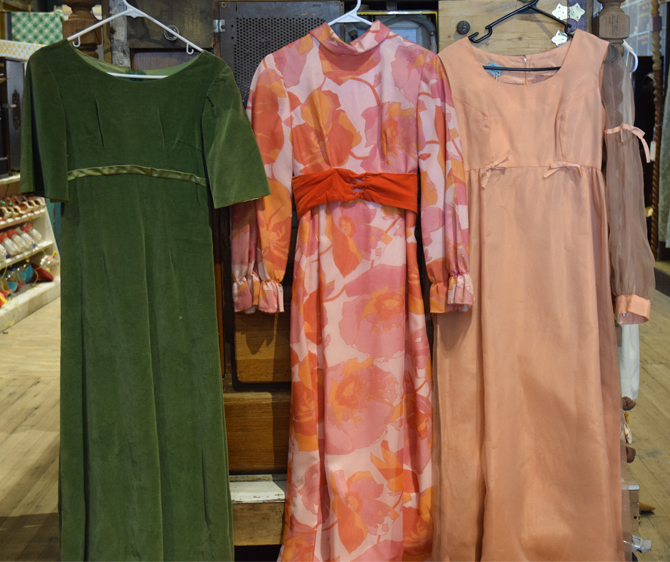
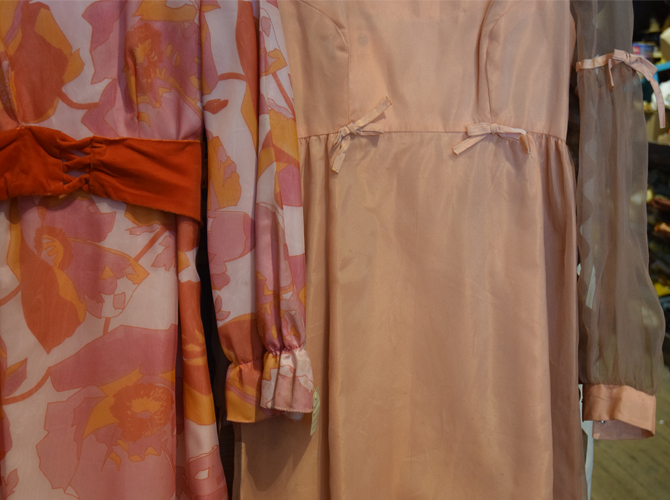
Many of the items were locally-made by seamstresses, often for clothes shops who would place their labels in the back, ‘A Lesley Fey Original!’ or by home-sewers. Metallic zips and hooks and eyes, now rusting slightly through the humidity, have been sewn in by hand, and linings – everything is lined – are tacked with irregular stitches.
I love seeing the hand sewing, it’s like handwriting and every sewer has their own style. Some hand stitching flows so beautifully, you want to know more about the person who created such gorgeous marks. Some is clunky and brutal, particularly where something has been mended with impatient stab stitches, functionally placed to limit the damage of a tear or burst seam.
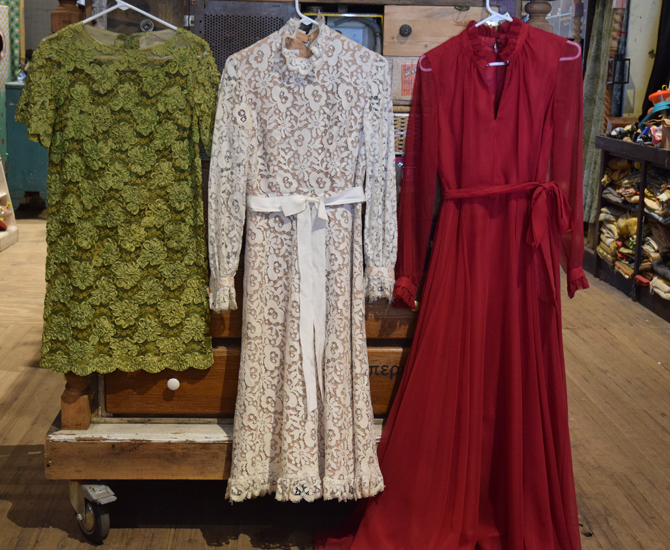
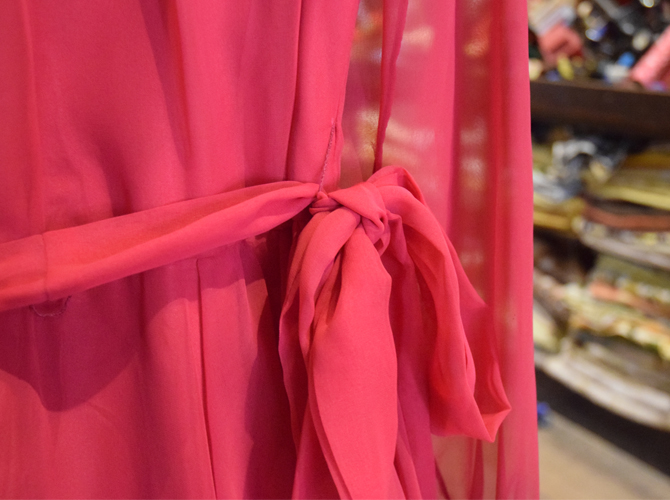
The fabrics used reflect the times, moving through sweetly printed and embroidered cottons similar to something I remember my mum wearing in the 60s, to boldly coloured polyester and a few nylon shirts and dresses, which look terrific – almost Gucci-like -but feel hideous. I always feel sorry for nylon and polyester, they are almost indestructible, looking as bright and shiny as the day they were first printed, but one touch and people move along quickly.
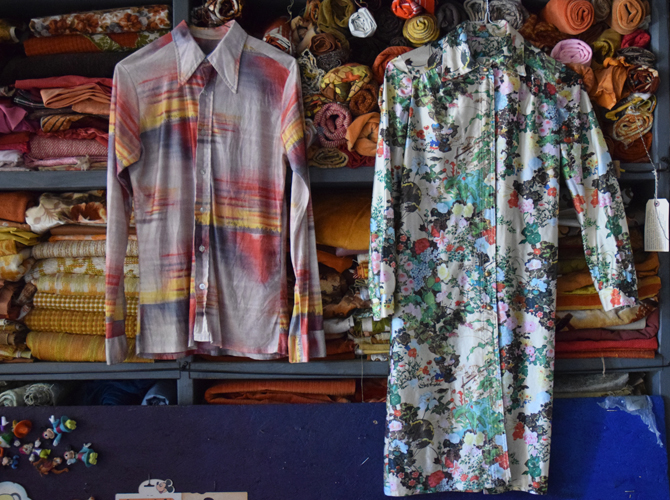
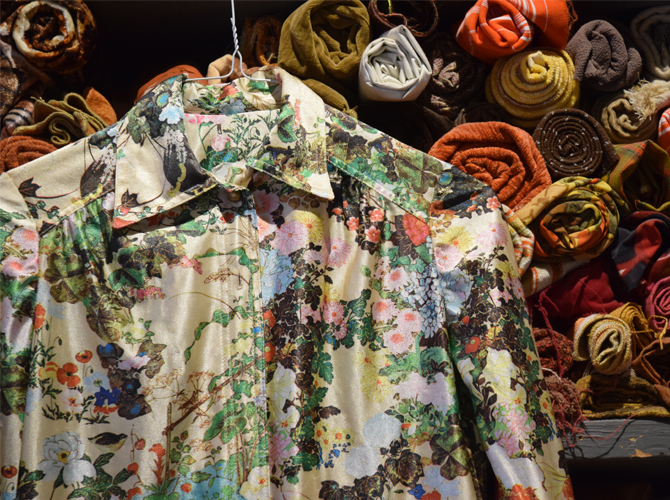
I barely scratched the surface with my selections here. Some are Megan’s edit from the collections, which reflect her taste. We both loved the ribbon work green dress, with its fine ribbon sewn over woven lace, and I loved the rik rak details on the sleeveless evening dress, I could totally see Megan Draper in that one. I’ll add a few photos of Megan in her clothes when I get myself organised this weekend.
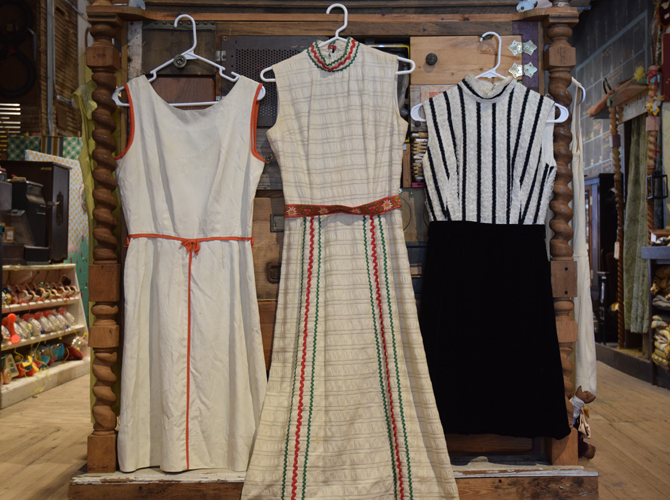
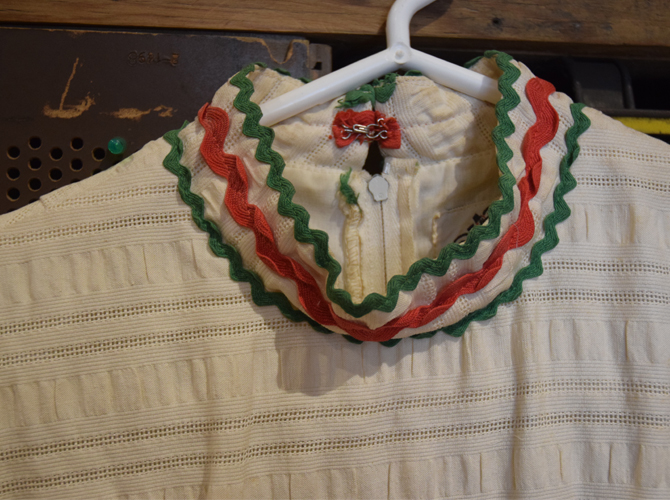
One of my favourite finds was this silk crepe dress below, which washed up beautifully, the fabric was a little moth eaten but the quality shone through.
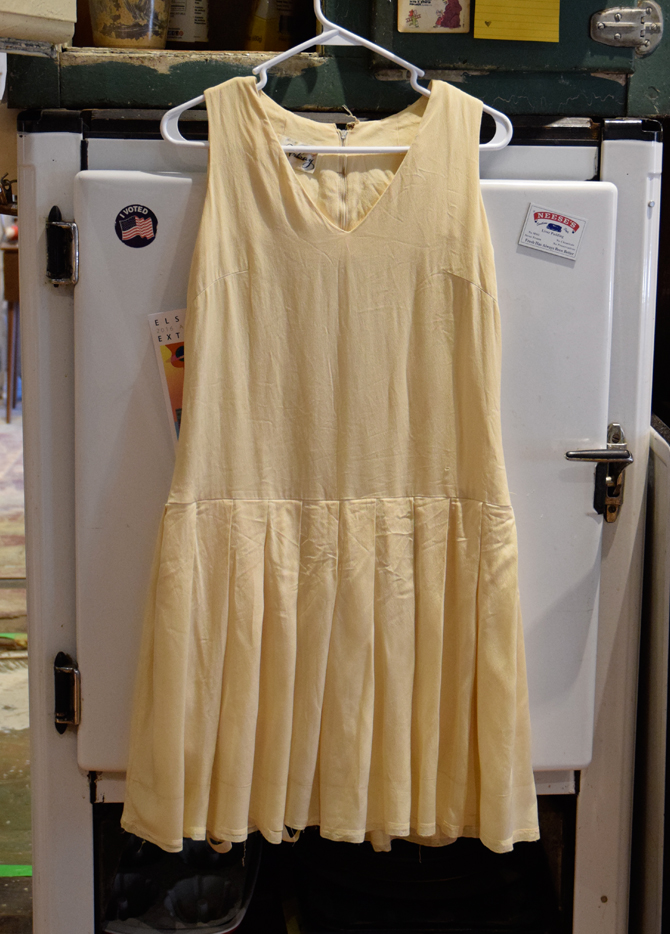
Spending time with the clothes was a treat, because I couldn’t buy any of them, I concentrated on appreciating their quality and style, relishing the small details. I envied Megan’s tiny frame as she could fit into many of the styles and carried them off wonderfully well, I squeezed into the what sundress with the orange bow trim but that was it.
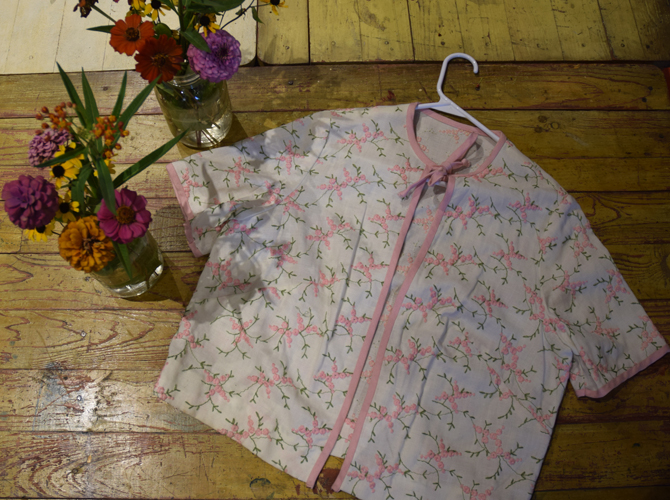
For anyone interested in vintage clothes from the area, the clothes make a wonderful resource. I urge anyone who lives close to go visit.
As a way to deal with all our excess ‘stuff’, be it clothes, furniture, kitchen gadgets or anything else hanging around the garage, the idea behind The Elsewhere project is genius. It shines a piercing light on our obsessively consuming society and gives us a creative and fulfilling way out. Elsewhere is poignant because it is one woman’s edit of society’s flotsum and jetsum and what she thought was worth saving and selling on, but the concept could work anywhere.
To see more on Elsewhere visit the website. MAD’s work at Elsewhere can be seen here. he’s also instagram-ing here

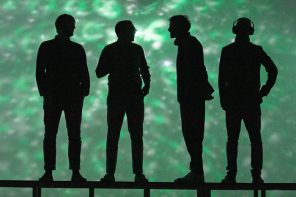
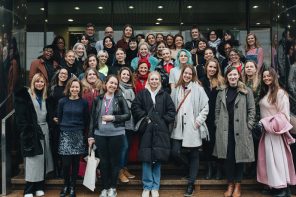
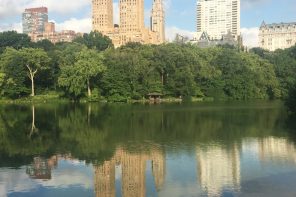
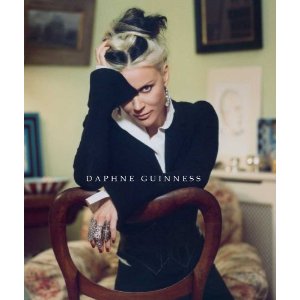
What a fascinating story. The detail about the hand-sewing is very poignant. Second-hand clothes, especially vintage garments, still seem (to me, at least) to contain something of the spirit of the person who wore them – and in this case, maybe they contain something of the person who made them, too.
Thank you for the wonderful story. The clothes are beautiful especially the colours and the details. The photos do not translate the unpalatable texture of the polyster/nylon – bit like a Zara/Mango/Topshop website. My grandmother always sewed ric rac on my dresses when I was a little girl. Sylvia Gray’s story reminded me of the contemporary Chinese artist Song Dong who created a large installation called “Waste Not” from the accumulation of thousands of items fuelled by his mother’s fear of providing for her family under Mao. Like Song’s installation, the Elsewhere Project is the experience of walking through accumulated history that deeply affects the viewer together with projects of the artist in residence. I look forward to seeing some of Megan’s photos.
Thanks for the nice comments Jessica, and Song Dong! Of course, what a great comparison Yvonne, good call!